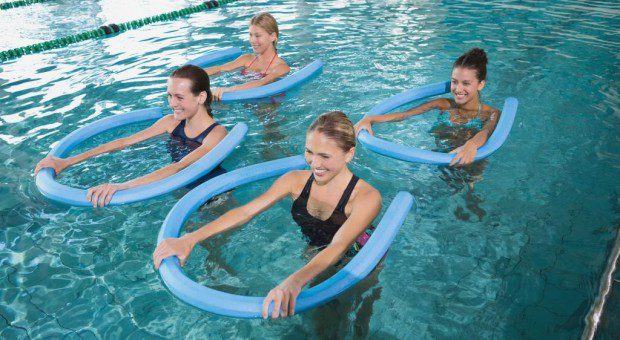
Top 5 Mistakes we see with Hydrotherapy for Back Pain
Hydrotherapy is a form of physiotherapy exercise conducted in water. It is an effective rehabilitation tool for both acute and chronic back pain. It is used for reducing pain and muscle ache while regaining mobility and strength.
There are many variables to consider when starting hydrotherapy. We commonly see many patients with back pain try hydrotherapy on their own and find themselves making the most common mistakes, these can result in periods of increased pain, fatigue or poor rehabilitation.
The five most common mistakes we see are:
1. The Water Temperature.
Water too cold? The idea behind being in the water is to aid in muscle relaxation and mobility. If the water is to cold your body will tense up. On top of being unpleasant, this can cause stiff movements – which is not what you want!
2. Deep/Suspended Does Not Necessarily Mean Better.
When you’re in the water you have different forces acting on your body than on land, such as buoyancy. We can manipulate these to suit a specific injury or level of fitness/ stage of rehabilitation. The depth of the water needs to be tailored to what you are trying to achieve, for example, is it a resistance-based exercise or a control-based exercise focusing on your movement pattern, or are you looking to simply de-load your spine for pain relief? Each of these examples may also need a different optimal water depth for best results.
3. “Just Swim”
Hydrotherapy is a specifically developed exercise program targeting your weaknesses and movement issues. Swimming does not do this – it is very general. Your body is also good at cheating! You can use other muscles to do the job for you when you swim – therefore it is not targeting your key spinal stabilising muscles.
Depending on the stroke you chose you can also be putting your back into a position that it does not like. For example, a freestyle stroke puts you into extension (arched back) and adds in rotation when you breathe. Some back-pain cases don’t like this position particularly for a sustained amount of time.
4. Poor Pacing (water deceptiveness)
This is a big one! People are often deceived by the water. The water supports your body weight and helps make your movements easier – taking away some or all of the pain. People with back pain generally find, because of this, they are able to tolerate more exercise in the water than on land. This makes it very easy to overdo it in your session.
You must pace your work out in the water so you do not get a delayed increase in pain when you hop out. There is such a thing as too much. It is best to see a physiotherapist who knows your injury and tolerance level. The prescribed hydrotherapy program will have the recommended repetitions and sets for each exercise with appropriate rest breaks. It is always easier to progress in your rehabilitation when you can minimise the setbacks and flare-ups.
5. Time – both for each session and in between sessions
This mistake leads on from mistake number three. You must consider the time for each session and the time between sessions. The time of each session is based on a number of things – your age, general health, injury and the stage of rehabilitation you are in. There is no one size fits all, it could range from a 20-minute session to 1 hour.
When looking at the time between sessions you need to consider how your body reacts after the initial session and the physiological principles for tissue healing and strength adaptations. This is best to discuss with a physiotherapist so you can understand the reasoning behind why you should go once or four times a week. Once again, there is no one size fits all.
Hydrotherapy is a wonderful tool in back pain rehabilitation! Don’t let yourself struggle. For best results consult a physiotherapist. A physiotherapist can design a personalised program targeting your goals and provide you with advice and education so you can avoid these mistakes and have success in the water!
